I lived in San Francisco for a couple of years but never visited the cable car museum.
Cable cars are one of iconic things for which San Francisco is known for. I would say every tourist who visits San Francisco rides at least one time a cable car. Even if that means to stand in line for over one hour.

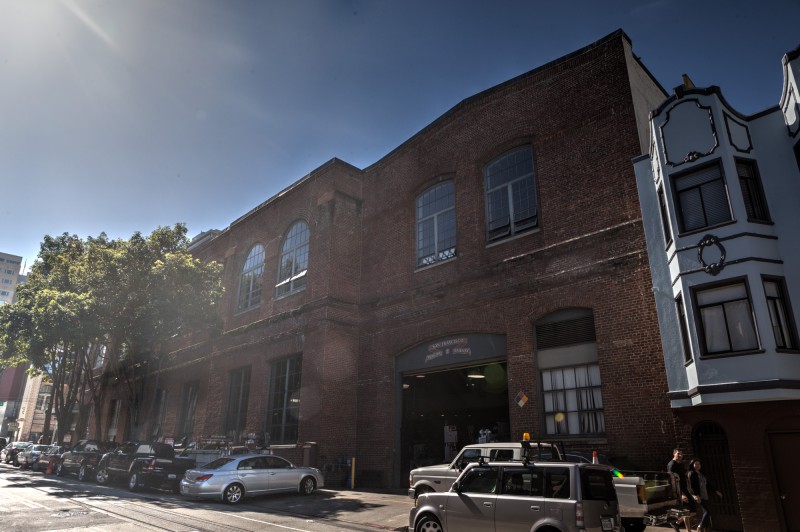
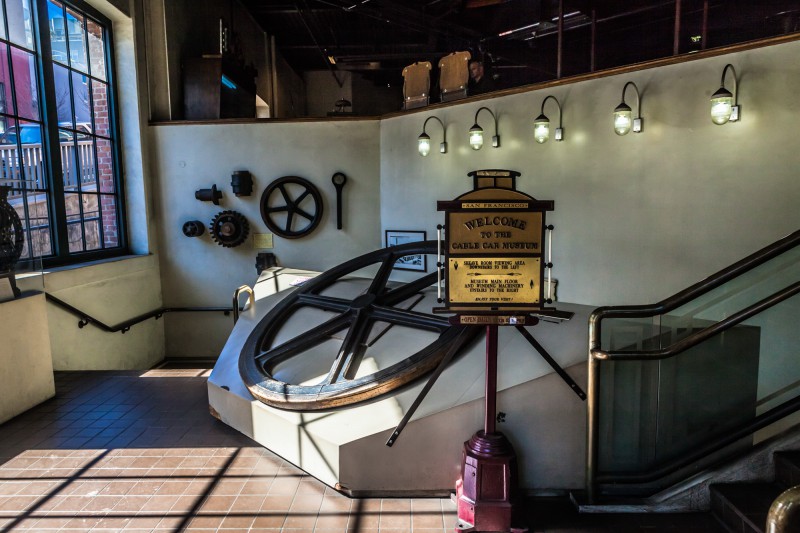
If you want to know more about the history of the cable cars and how everything works, you have to visit the cable car museum. The admission is free and it’s not only a museum building, it’s also the heart of all four cable car lines in San Francisco. I wasn’t expecting to see, what I saw there.
Besides the museum with the history about the cable cars, you will see the big electric motors who drive big sheaves to move the cable car lines. The cable cats itself don’t have any kind of propulsion system. All they do is to grab on to the moving cable which runs below the surface of the streets. You can actually hear the cable running beneath the surface when you walk over them. What you hear is the cable running over the many sheaves and pulleys which guide the cable throughout the city. There are 40 cable cars in the system. On an average day, a maximum of 26 cars are in operation at one time. There are two types of cable cars in use: Single-ended, which need to be turned around on a turntable at the end of the line and double-ended, which can operate in both directions. The single-ended cars run the Powell-Mason and Powell-Hyde lines; the double-ended on California Street.
Overnight the cable cars get parked in the barn above the museum.
When you enter the building and go down the stairs, you get a glimpse of how it looks like beneath the streets of San Francisco. From here you can see the giant sheaves guiding the cable where it’s supposed to go.

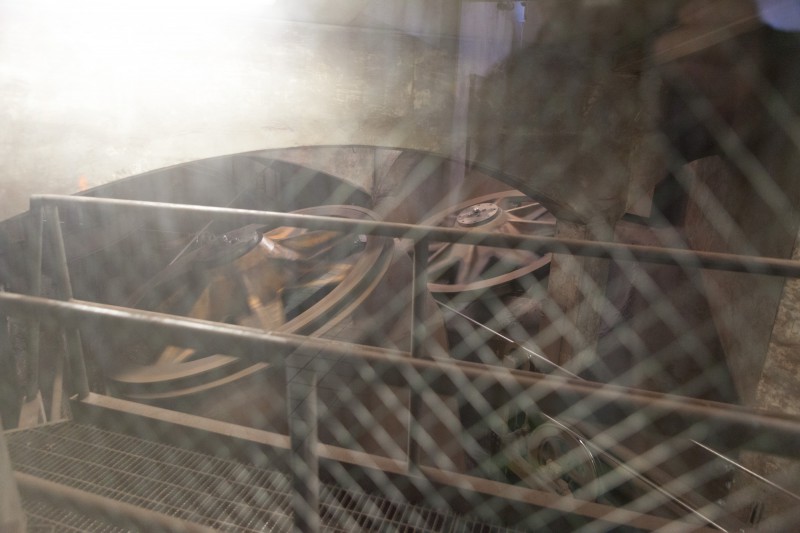

Cable Length:
- Powell Street: 9.050 feet
- Mason Street: 10.050 feet
- Hyde Street: 15.700 feet
- California Street: 21.500 feet
The cable moves at a speed of 9.5 miles an hour and all cables leave and enter the powerhouse under the museum.
When you head upstairs to the museum level, you can see the mechanics workshop, the giant General Electric motors powering the lines and at the far side the tensioning sheaves. This sheaves are mounted on a movable sled, which is attached to a big weight, to put tension on the lines. From 1888 until 1918 the cables were powered by steam engines. If you go outside and walk up Washington Street, you can still see the remainders of the chimney. It’s much shorter now after the 1906 earthquake. The electric motors you see today were built in 1984 by General Electric and have 510 horsepower each.
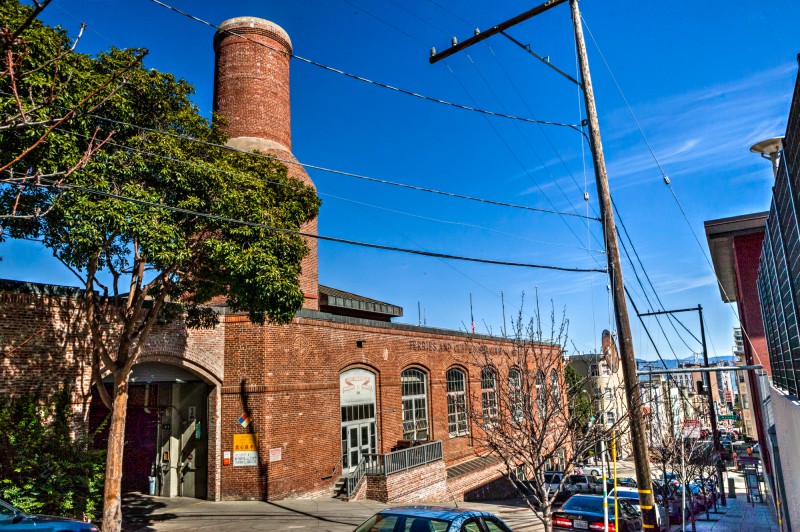



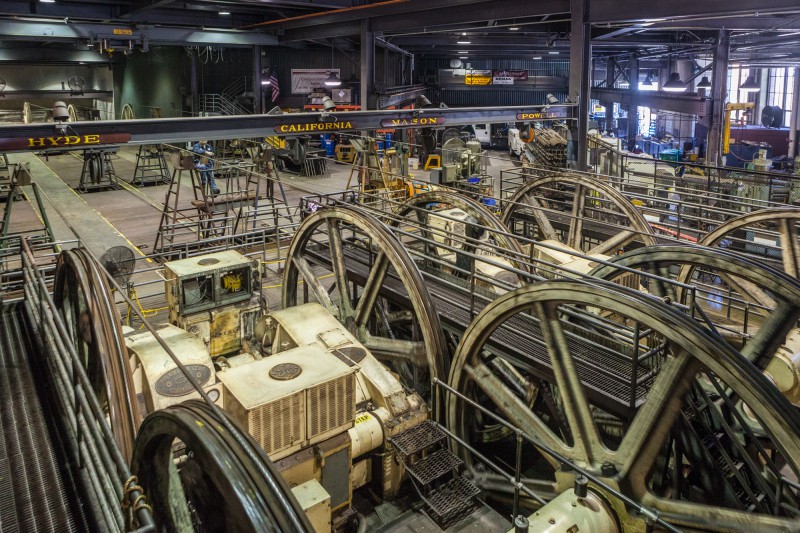

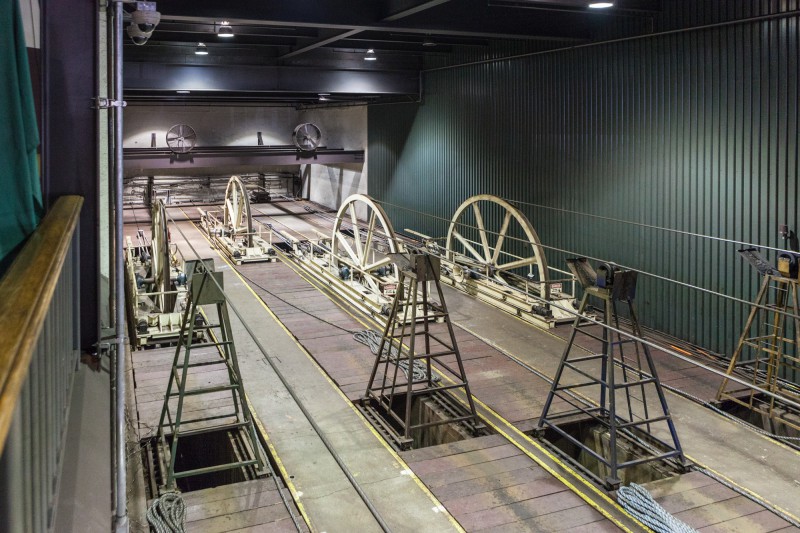

The museum has different exhibits to show how the cable cars grab on to the moving line to get pulled along with it. This is interesting to see. Interesting is also how the drive around curves. Some curves have many pulleys to guide the cable exactly along the center of the curve and the cable car stays attached to the cable. In other curves the cable car let go of the line, coasts around the curve and grabs the cable again. Next to the museum is a small gift shop.

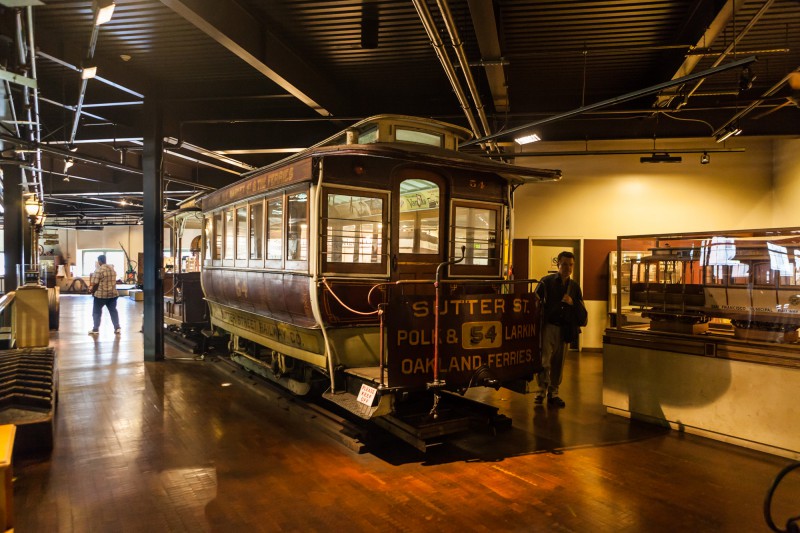
The San Francisco Cable Car System was designated a National Historic Landmark in 1964. The museum tells the story of the only working cable car system in the world. The museum has never charged admission and relies on profits from sales and donations to expand the museums operation.

Peter has a passion for Traveling, Photography, and Geocaching. These are the best ingredients for amazing adventures all over the globe. “Traveling is fun, no matter if you stay in a luxury hotel or travel like a backpacker.” Peter shares his experiences on his Blog www.gatetoadventures.com
Some of Peter’s photos are published on corporate websites, in-flight magazines, travel guides, and much more.



